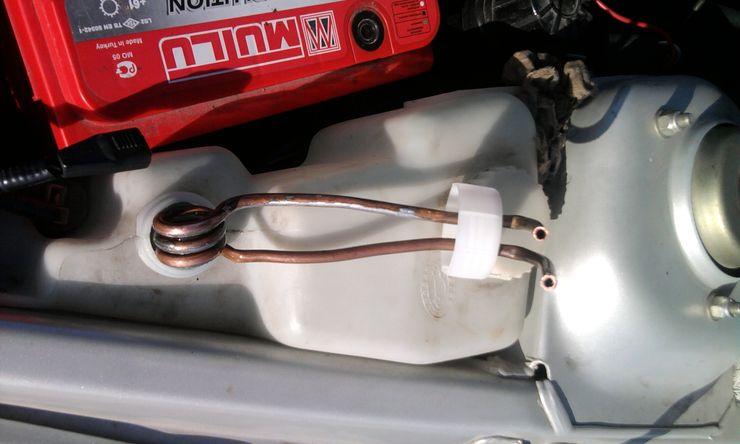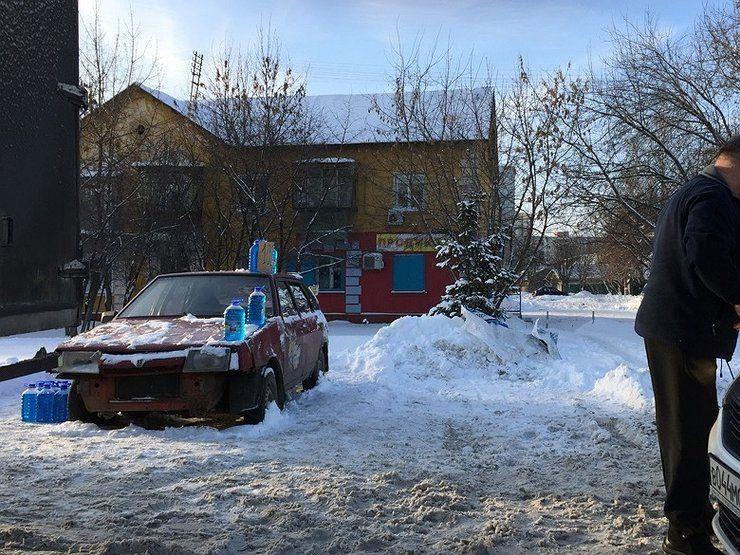
How to make the “non-freeze” not freeze in any frost
When it comes to the winter road and the windshield, automakers answer in sync: windshield and heated nozzles! Apparently, in Japan, Korea and Germany they do not know about the amount of dirt on our roads and the quality of the washer fluid. Therefore, you have to modify the machines yourself.
A consistently clean windshield in winter is a guarantee of safety on the road at any time of the day. If the driver does not notice this or that obstacle or some other road problem, no electronics will help. This is the only reason why the headlights are constantly being refined, and the “visors” and windshield washer nozzles are equipped with heating. What tricks in tandem with innovations do not go into action when ice mixed with mud and salt block the view, and the saving liquid stops “sprinkling” the glass.
The refinement of a standard car, of course, should be started with the replacement of nozzles: “warm sprinklers” cost only 50 rubles, and it’s really easy to install them - power on glass heating and have fun in any frost. However, they sometimes give up slack: the quality of parts and the composition of the antifreeze liquid can defeat any technology. But does that stop anyone in Russia?
Many have already guessed that it would be more profitable to heat not sprayers or glass, but the “washer” itself. No matter how cold the surface is, warm liquid will instantly remove not only dirt, but also ice! Our people are cunning and have already come up with more than one way to do this. Let's start with the simplest in terms of implementation.

Experienced drivers know that the highest temperature is in the engine compartment. So, you can take a long hose, twist it with a spring and lay it all the way to the nozzles, thereby allowing the washer fluid to go through the warm “room” for a long time and come out already quite warm. The pipe costs a penny, and you don’t really need to redo anything: you only need to lay a new “winter pipeline” and drive with clean glass. True, this method also has its drawbacks: you have to wait for the power plant to warm up, and a long line pretty quickly kills the wiper pump. In the Zhiguli, this will scare few people, but in an imported car ...
Another option is more complicated: people increase the "small circle" of antifreeze circulation with a copper tube wrapped in the form of a boiler, and immerse it in a reservoir with a "washer". The circuit only works when the engine is warm, requires careful assembly and refinement of parts, and is not suitable for all cars. What to do?
The easiest and most effective way is to make the tank heated by electricity. Many use seat heating elements that are mounted on the outside of the washer reservoir: they do not provide a high temperature sufficient to burn through thick plastic, consume little electricity and last quite a long time. Installation is simple, and with the onset of heat, you can always remove and put away until the next frost.

And finally, the fourth option is the most difficult and expensive. In regions where frost lasts for a long time, and temperatures break through all marks, an electric heater with additional fans, which is powered by a generator, is installed next to the washer reservoir. The warm air coming from such a stove will quickly warm up both the engine and the washer.
Wise Finns, who have long since learned to count their hard-earned money, put an ordinary socket near the house, and a special stove with a timer in the car itself. And they sit in the morning in an already warm car. Hence the talk about the fact that it is not necessary to heat. In Russia, such a “service” is possible only in a private house, and it’s not particularly common, because gasoline is still cheaper. Warmed up the old fashioned way — yes went.
However, soon the prices at gas stations will teach us to count each liter, and the mechanisms for "accelerated heating of everything and everything" will be widespread. Just a couple of years to wait.
